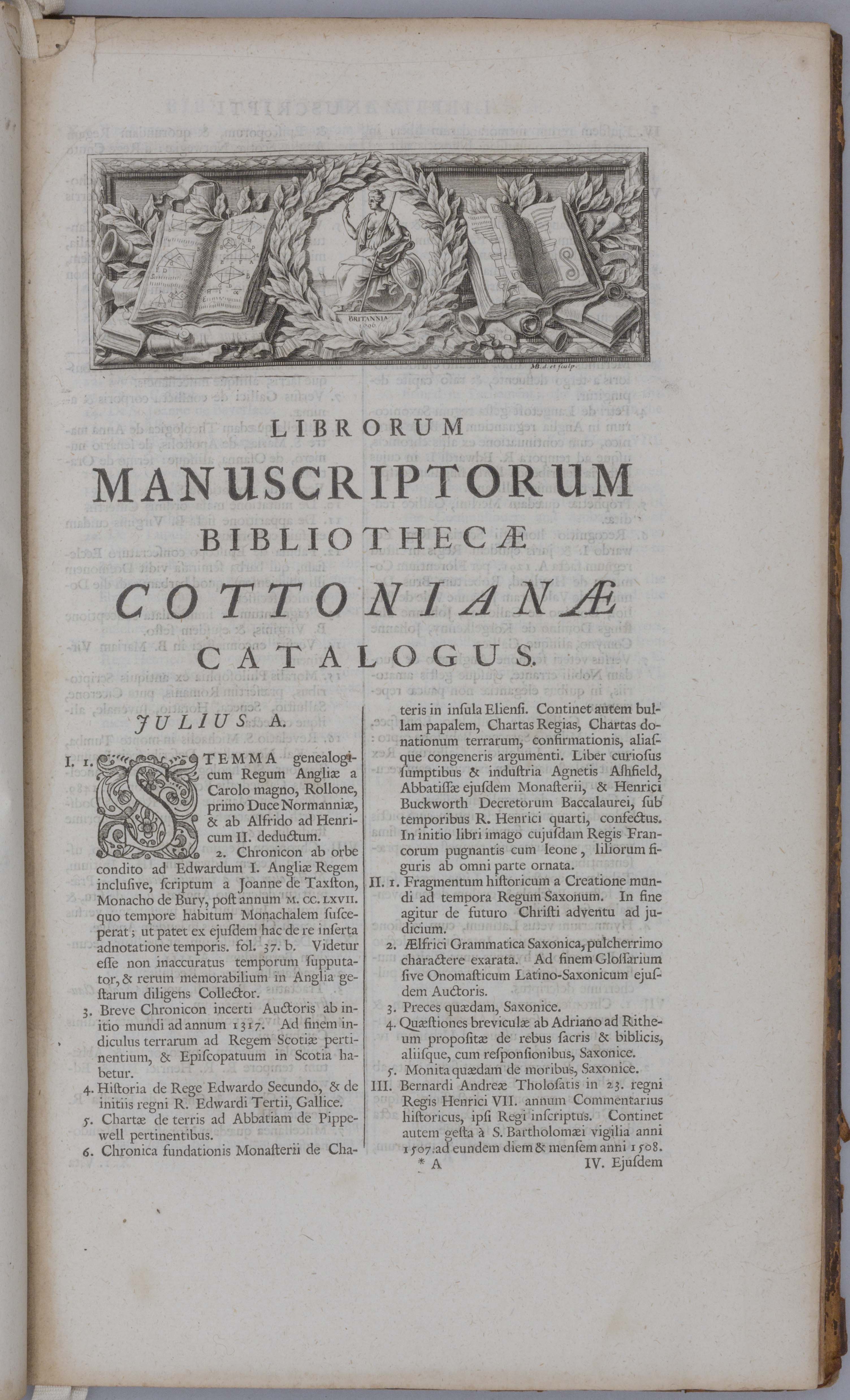
Oxford: Sheldonian Theatre, 1696
CC25.8c.1 [B.M.] lf
With Henry VIII’s dissolution of the English monasteries between 1536 and 1540 to accrue wealth and suppress the political opposition that could be expected from them came the destruction of their libraries. ‘In my grandfather’s days the manuscripts flew about like butterflies’, wrote the antiquary John Aubrey famously, whilst John Bale contemporaneously lamented the lack of respect shown for libraries: ‘to destroye all without consyderacyon, is and wyll be unto Englande for ever, a most horrible infamy amonge the grave senyours of other nacyons’. Of the over 800 religious houses in England, only about 5,200 library and service-books survive. Writing under Queen Mary, the antiquary John Dee suggested that dispersed manuscripts should be sought out and collected for a royal (equivalent to a national) library. Indirectly, this happened. As a second-generation collector, Sir Robert Cotton (1571-1631) collected monastic manuscripts which upon the death of his grandson John in 1702 passed to the state and in 1753 became one of the founding collections of the British Museum, now the British Library. Shown here is the earliest catalogue of the Cotton Library, compiled by John Cotton’s unofficial librarian. Its introductory life of Cotton and history and analysis of his Library remain useful today.